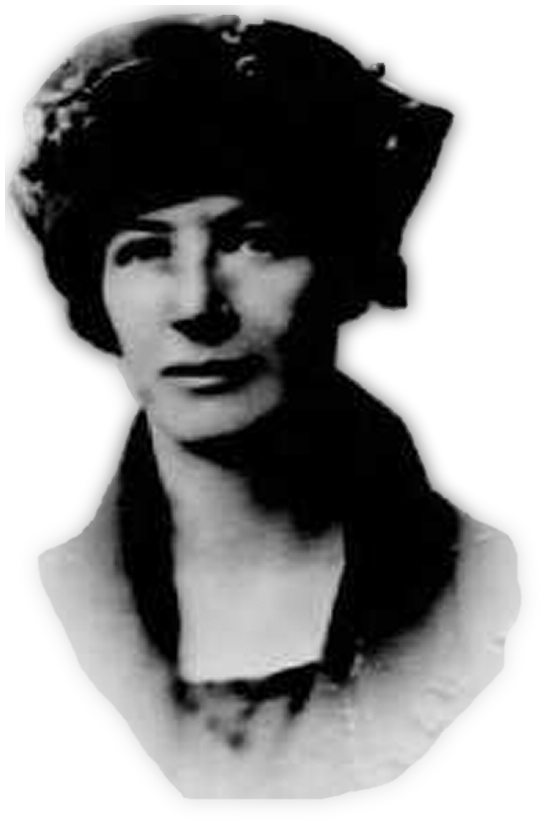Quick Reference
1938
Mary Lyon Church
Buckland Center
Oil on Canvas
Landscape
Churches, People & Livestock
22 x 42
Vose Galleries (Boston), 1938
Grand Central Galleries (NYC),1939
Mr. and Mrs. L. C. Howard
NA
Related Links
- See also the...
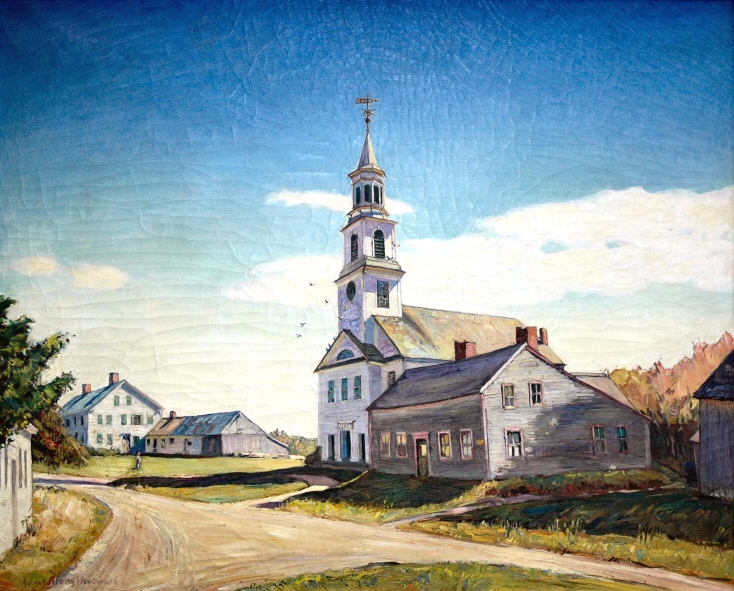 Churches & Cemetery Gallery to view related pieces.
Churches & Cemetery Gallery to view related pieces.
- See also the...
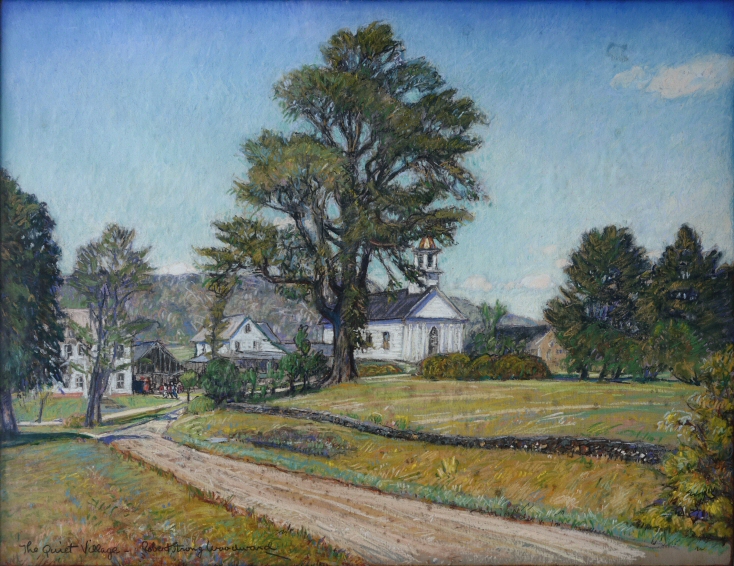 Villages Gallery to view related pieces.
Villages Gallery to view related pieces.
- See our page devoted to ...
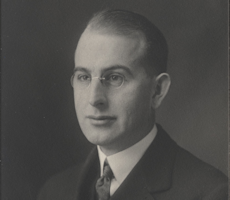 RSW childhood friend Victor West
RSW childhood friend Victor West
- See our page devoted to ...
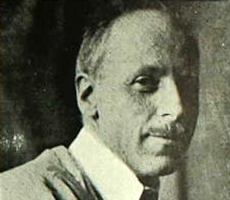 RSW devoted friend, class-mate Joseph Cowell
RSW devoted friend, class-mate Joseph Cowell
- See also the...
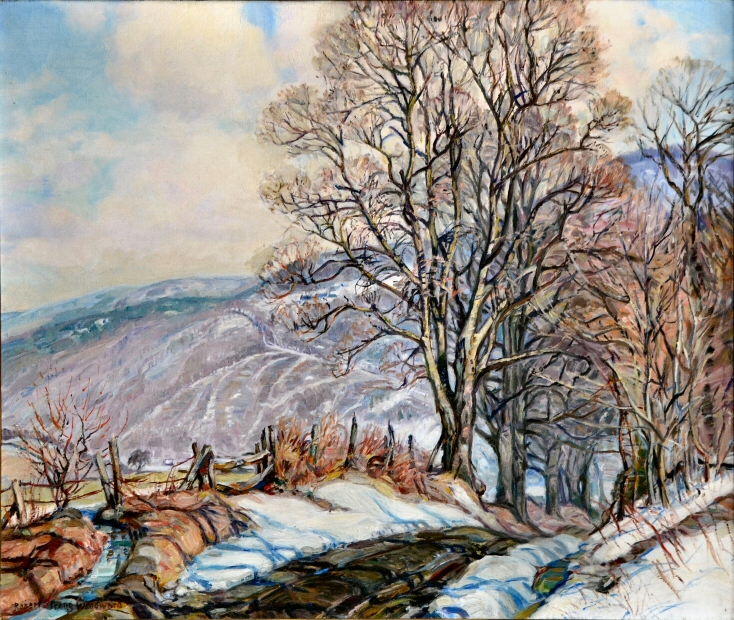 Roads & Streets Gallery to view related pieces.
Roads & Streets Gallery to view related pieces.
- See also the...
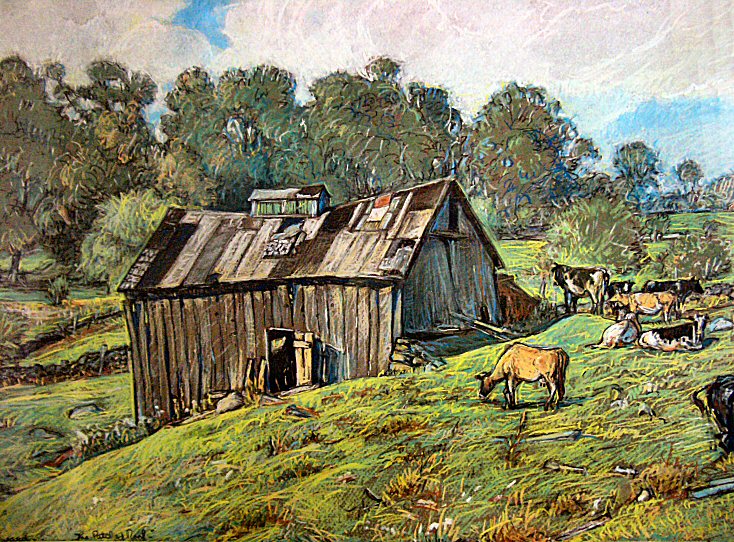 People & Livestock Gallery for related pieces.
People & Livestock Gallery for related pieces.
- See also the...
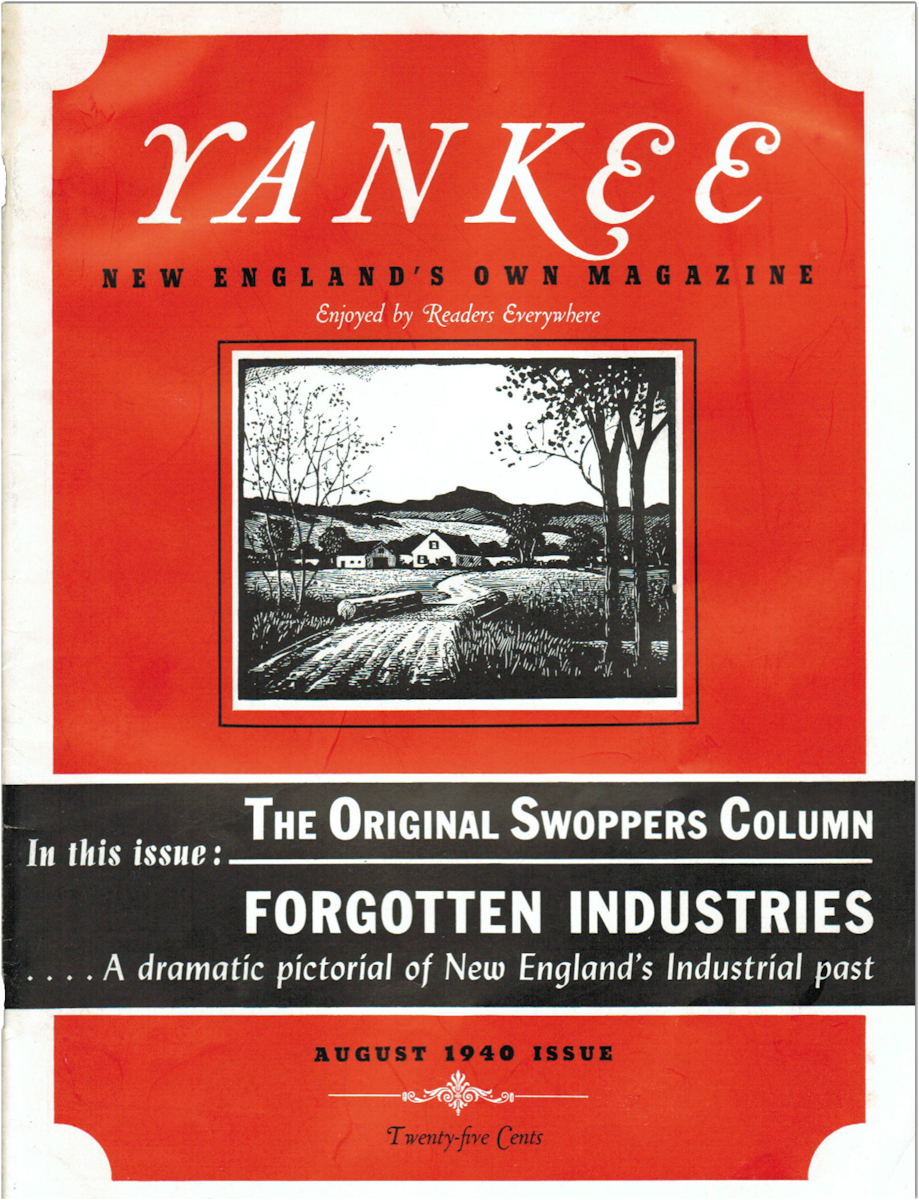 August 1940 Yankee Magazine article featuring the Bennington Church painting.
August 1940 Yankee Magazine article featuring the Bennington Church painting.
Featured Artwork: Heart of New England
RSW's Diary Comments
"Painted in 1939. A larger painting of the Mary Lyon Church in Buckland, made for the home of my dearest friend Emmet Hays Naylor in Cummington to take the place of the 25" x 30" of the same subject (later bought by Mr. F. B. Frelinghuysen) which Emmett had chosen but which was not the right proportion for the space. He had it but a few weeks when he died. My first view of it was at his funeral. After his death it was given back to me by the family. I sent it to the Grand Central Art Galleries, who sold it to Mr. and Mrs. L. C. Howard, Arlington, New Jersey."
Additional Notes

 Enduring New England, 1931. Woodward made
Enduring New England, 1931. Woodward made
four version of this scene, a pastel and three oils. This
painting is in the Garvan Collection. Another went to
Bradley U., his alma mater, and one went to his sponsor
Mrs. Ada Moore suggesting its importance to the artist.
But ultimately, in what appears to be a press kit he used
in the mid-1930s, RSW named New England Heritage
as his "widely considered masterpiece" to date. Hmm?
Over the years, Woodward, more and more, is becoming associated with the "New England Church," as being emblematic of his interest and subject matter. This is attributed to, in large part, this painting and Enduring New England, the only painting to make the famed Mabel B. Garvan Collection.
Yet there is no supporting evidence. In total there are only 19 pieces of work out of at least a thousand where churches appear at all. One church is a pencil drawing from his adolescence (and not even located in New England), nine are "village center" paintings, three are "Mary Lyon's church only paintings, three more are a combination of "Mary Lyon / Village center" pieces, and then there are three church painting made for the Garvan Commission.
Of the village paintings, four of them are the same church which is really about the dirt road and village center it passes through, two of them are of the Heath village center, and one is of his own Episcopalian church in Shelburne Falls that isn't about the church as much as it is the people skating on the frozen Deerfield River.
Painting Story
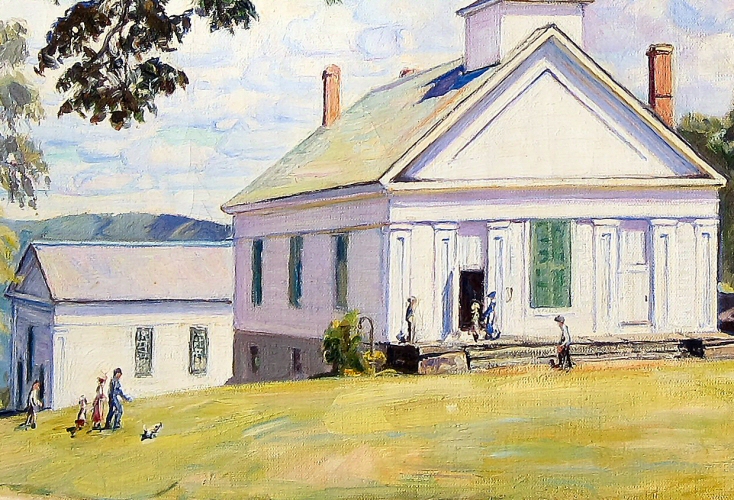
 A Close up the people in fornt of the church
A Close up the people in fornt of the church
Aptly named because it holds so many truths. It demonstrates Woodward's loved for the poetic- that which transcends its
meaning. The first obvious meaning is that the church and meeting hall are quite literally the center of every village, certainly in New
England. One could hardly separate the two, however, for Woodward it was more a symbol of the typical village center than
anything relating to religion. Though deeply devout, he kept it private and to himself. Let's also not forget the idea of it being
a gathering place open and free to all. That is the whole idea behind the New England "Green," or common. That it is shared, public
ground. The original Greek word from the bible that is translated to mean "church" is "ekklesia" meaning "a gathering, or an
assembly" and is the basis for the word "congregation", as in "Congregational Church" for which the Mary Lyon Church is actually
named, "The First Congregational Church of Buckland."
The Church's namesake, Mary Lyon, is a famous educator and pioneer leading us to our next point of import to
Woodward - education. The artist gave great value to education and most of all- its accessibility to everyone irregardless of sex or
social class (we have no evidence how he felt regarding race). We believe his greatest regret is probably never finishing his
education. As perhaps evident of this insecurity, he surrounded himself with educators, academics, and intellectuals. Many of
his childhood friends went into and were pioneers in their own right in the field of education:
 (Dr.) Helen Ives Schermerhorn devoted her life's work to accessible Night School programs in Schenectady, NY, Newark, NJ,
and Providence, RI.
(Dr.) Helen Ives Schermerhorn devoted her life's work to accessible Night School programs in Schenectady, NY, Newark, NJ,
and Providence, RI.
 Victor West,
a progressive reformer of the Progressive Era became the first director of the newly formed Political Science Department at
Stanford University. Victor worked to remove nepotism from public office setting standards and qualifications to hold certain
appointed positions, like a law degree or engineering degree... a license of some sort etc.
Victor West,
a progressive reformer of the Progressive Era became the first director of the newly formed Political Science Department at
Stanford University. Victor worked to remove nepotism from public office setting standards and qualifications to hold certain
appointed positions, like a law degree or engineering degree... a license of some sort etc.
 Joseph
Cowell, Woodward's dear friend who waited to attend the Museum School of Fine Art in Boston (MFAS) for the first year
young Robert could go there (1910 was the first year the school's new ground level campus would open) graduated from MFAS,
and after serving in World War I taught at the newly formed, state funded, and public, Massachusetts College of Art today known
as MassArt providing more affordable opportunities to aspiring artists in the state.
Joseph
Cowell, Woodward's dear friend who waited to attend the Museum School of Fine Art in Boston (MFAS) for the first year
young Robert could go there (1910 was the first year the school's new ground level campus would open) graduated from MFAS,
and after serving in World War I taught at the newly formed, state funded, and public, Massachusetts College of Art today known
as MassArt providing more affordable opportunities to aspiring artists in the state.
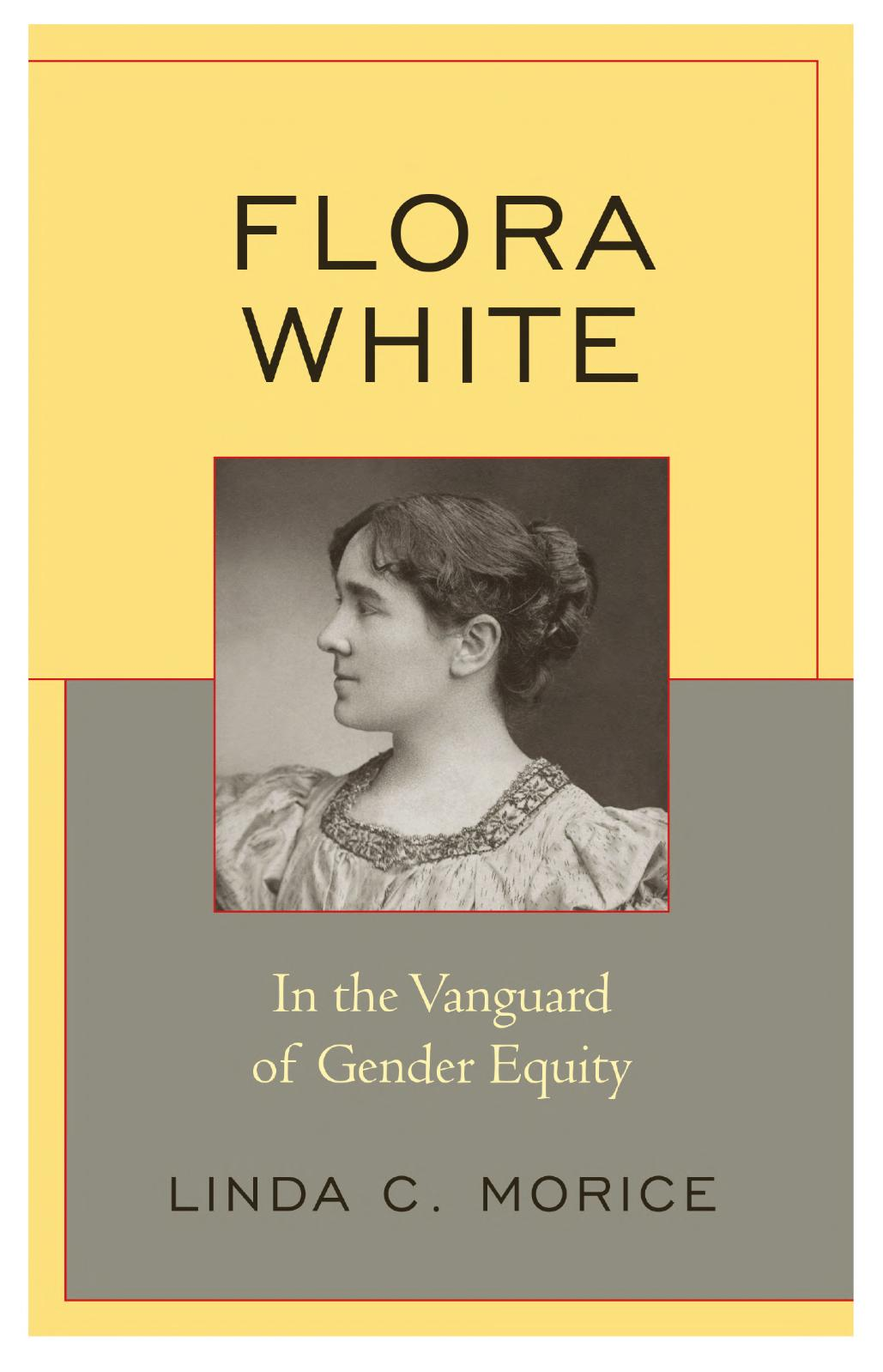
 Flora White: In the Vanguard
Flora White: In the Vanguard
of Gender Equity (2016)
We are confident that education is equal in the value to the church being a gathering place, and the center or heart of the
town. There is another symbol of where the town's heart lies in pride and that is Mary Lyon herself. Buckland is her home town.
She started her schools for girls there. At the time it was a distinctly New England thing to educated women. Woodward had a lot
of educated women friends and was clearly an advocate of their causes.
A number of those women chose not to
marry or have children, such as Helen (others include:
Ethel Dow,
Lucy Bridgeman,
Beulah Bondi
Miss Mabel Raguse, Ms. Ethel Paine Moor,
and Woodward's cousin, educator, Flora White whose pioneering
work in the advocacy of women's physical education is having a remarkable Renaissance. As a side note, Helen went to Vassar,
one of the Seven Sister schools, and did all of her graduate and post graduate work at another- Bryn Mawr College one of the first
schools in the country to offer such degrees to women. In many ways, this is all attributed to the life's work of Mary Lyon. It is a core
belief associated with New England, because it originate there.
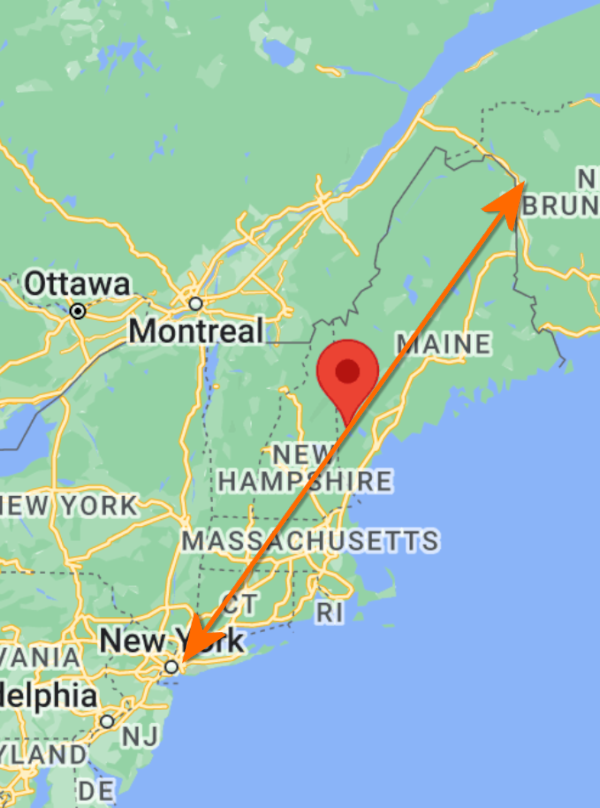
 A screen capture of Google Search
A screen capture of Google Search
Yet still, there is a possible third meaning to the name of this painting and it is geographical. If you were to look at a map of New
England or better yet do a Google search for "New England map" the first thing you see is the image to the right placing the center of
NE just east of Maine's border with New Hampshire. The map software is measuring from the southwestern tip of Connecticut to the
farthest northeastern tip of Maine. It is not accurate or a true representation. That is a geographical spot on a map.
If you were to consider the proximity, however, of each New England states' capital, the picture is still skewed but
clearer. Now, throw out the capital skewing the map, Augusta, ME, and add the capital of New York, Albany, to the area and five state
capitals of the northeast region are all within a two hour drive (plus or minus 20 minutes) form Buckland, MA making it the true
geographical heart of New England in a quite literal sense. We are not suggesting Woodward knew this, although we would not be
surprised if he did, but even if he didn't its truth is still very auspicious.
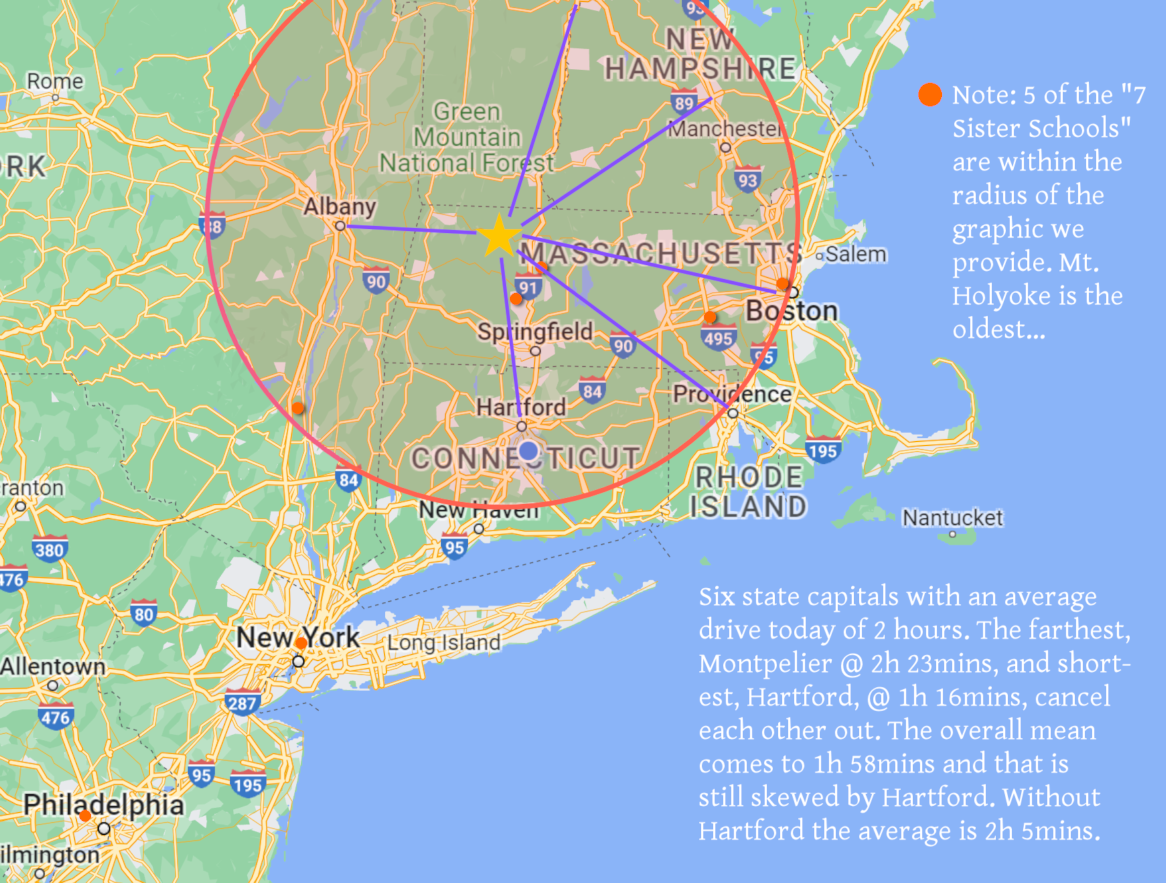
 CAPTION FOR PIC
CAPTION FOR PIC
Enlarge the map to the left will explain the basics, but we also want to note that inside that radius of 2hrs (the circle on the map) we also note the number of sister schools inside that radius- 5 of the seven schools. What's more is that the orange dot over South Hadley marking the location of Mount Holyoke is not exactly accurate. That is where the campus ended up but it is not where it started. Do you know that Mt. Holyoke is credited as being the first (1837) of the schools? However, it was the second to last (1888) to get its Charter and a large part of the reason is because Mary Lyon wanted it to be affordable:
"Lyon's vision fused intellectual challenge and moral purpose. She valued socioeconomic diversity and endeavored to make the seminary affordable for students of modest means."
How original was Mary Lyon? She originated the work-study program where her students shared in the domestic work of the school to keep cost down. She was someone Woodward clearly admired, in many ways he shared her aspirations, the most compelling was her faithful devotion, creativity, originality, and indomitable and persevering spirit or - her heart ❤

.png)


